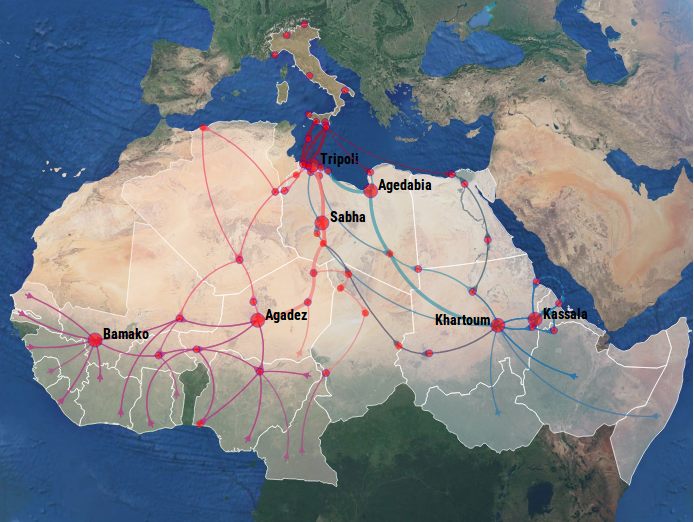Bericht eines Fluchthelfers aus Niger: Ich verdiene mein Geld mit den Reisen von Leuten, die nach Europa wollen. Die Migranten sind wie die Touristen, die hier mal gelebt haben, sie sind ein gutes Geschäft. Seit Europa Niger dafür bezahlt, dass die Polizei gegen Schlepper vorgeht, hat sich deren Lage verschlechtert. Da der Transport von Menschen aber ihre Lebensgrundlage ist, finden sie neue Wege und Routen.
La Stampa | 07.10.2017
Ad Agadez con un trafficante di migranti: “Vendevo uomini e destini per fare soldi”
Il racconto di un passeur del Niger: mi riempio le tasche con i viaggi di chi vuole andare in Europa
Domenico Quirico
Il setaccio funziona. Ad Agadez, crocevia dei migranti verso la Libia, un luogo dove tutte le coscienze sono umiliate, il setaccio creato dall’Europa lascia cadere ormai solo pochi granelli. Ecco: da qui per noi il migrante ritorna invisibile, non esiste più. Ero stato qui pochi mesi fa ed era un fiume di uomini e donne che fluiva nel deserto. Oggi la città sembra morta in un’afa senza respiro, spariti o nascosti i passeur che ne erano i visibili padroni, ritornata la vita e il mercato alla miseria di sempre. La gente se ne sta in giro senza uno scopo, con l’aria di aspettare qualcosa.
È l’ennesima, non l’ultima nessuno si illuda, svolta della Migrazione: che cercherà nuovi alvei e nuove strade. Per raccontarla forse bisogna cercare un altro punto di vista, un’altra angolazione. Il racconto di questo trafficante di uomini per esempio: i ministri europei non lo incontreranno mai uno così. Forse è un errore: scoprirebbero molte cose che non sanno.

